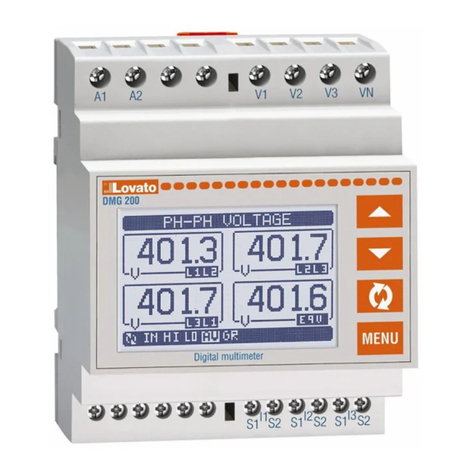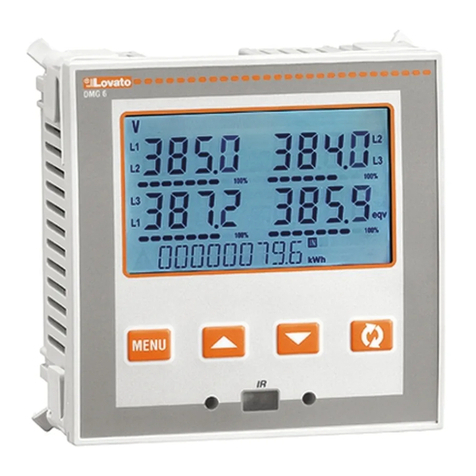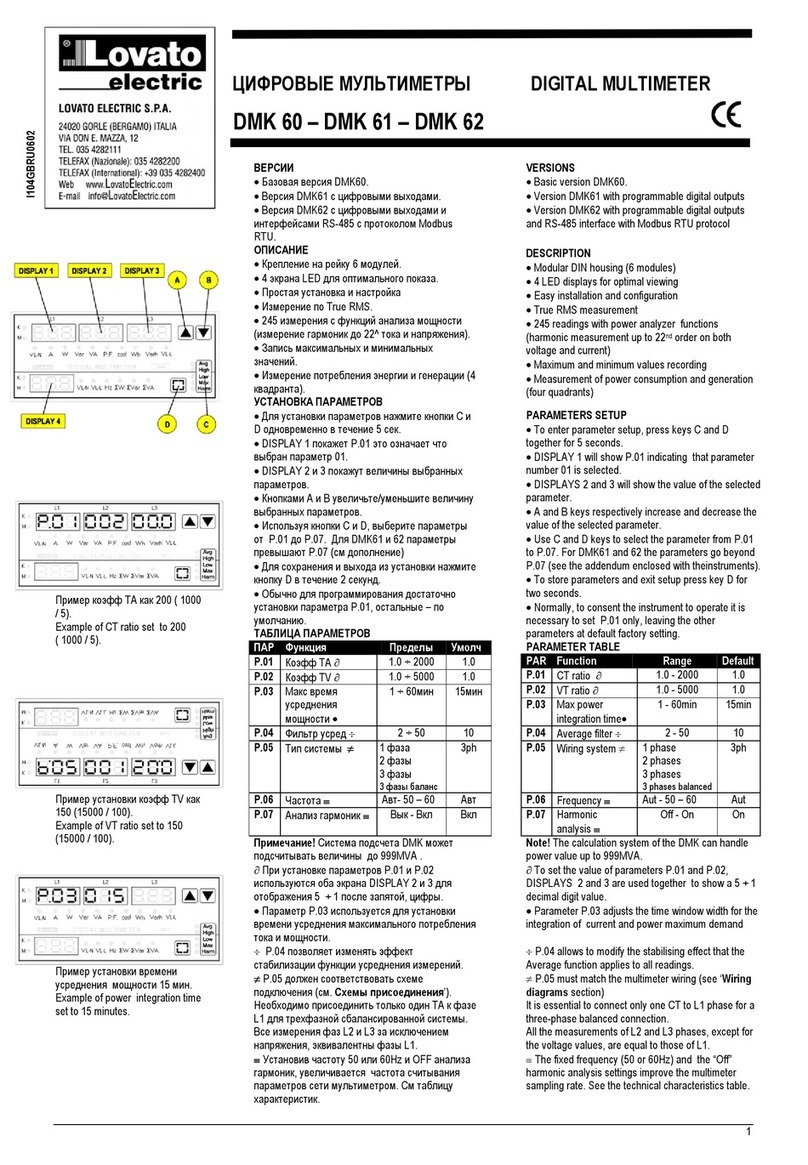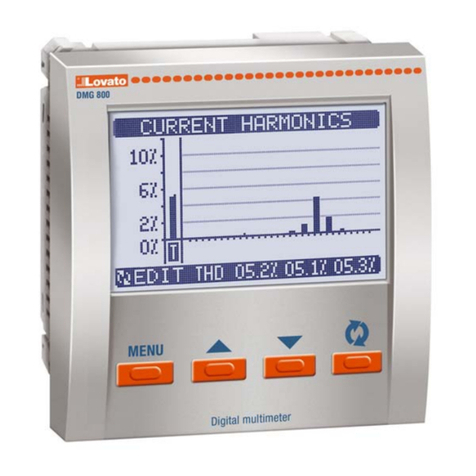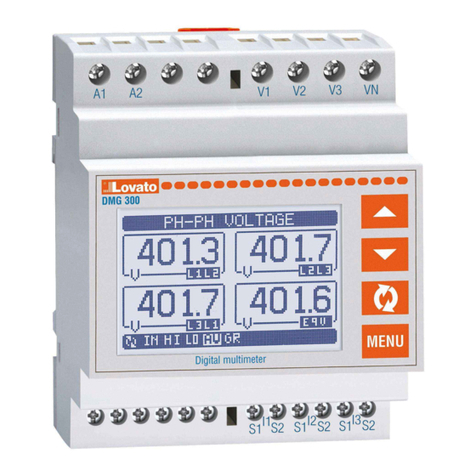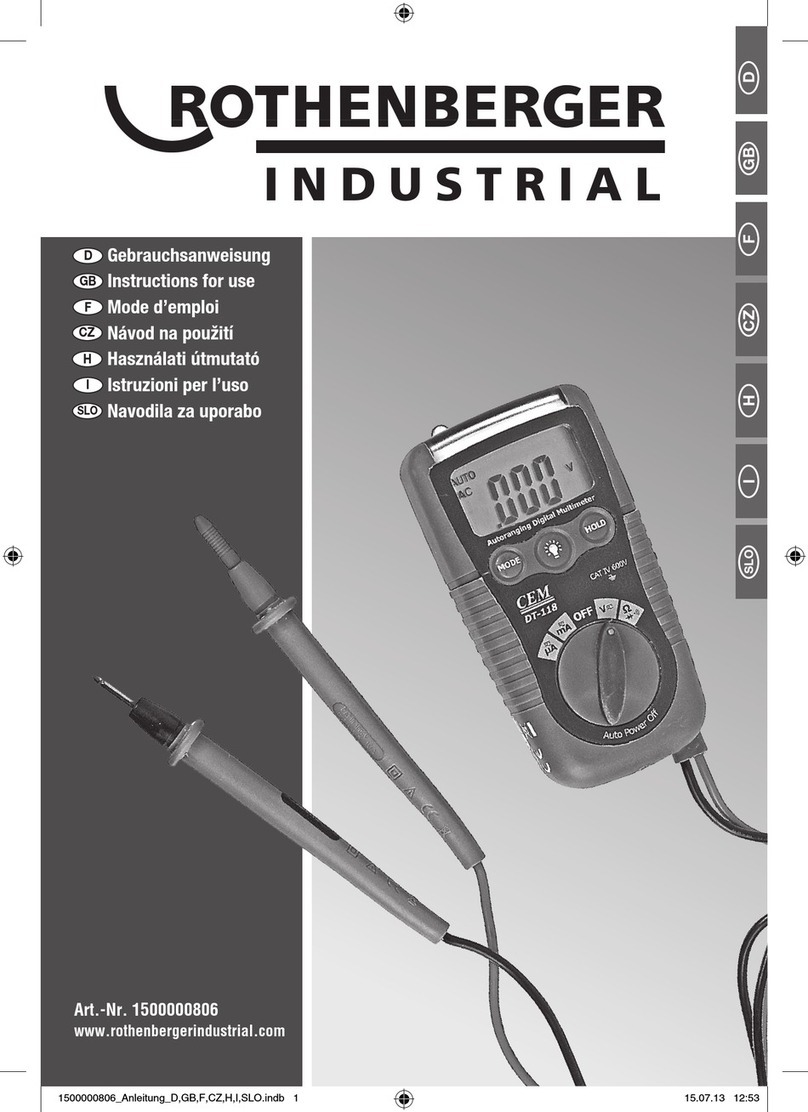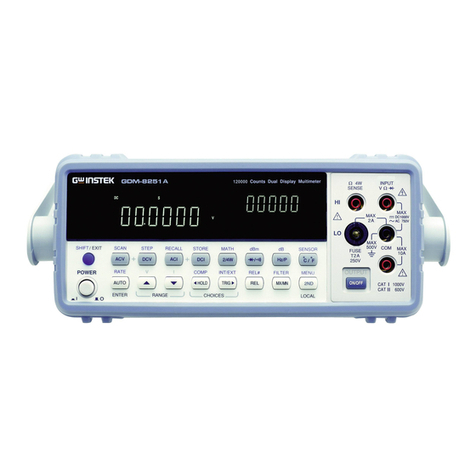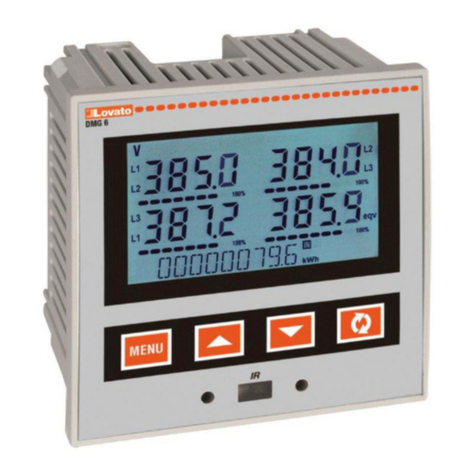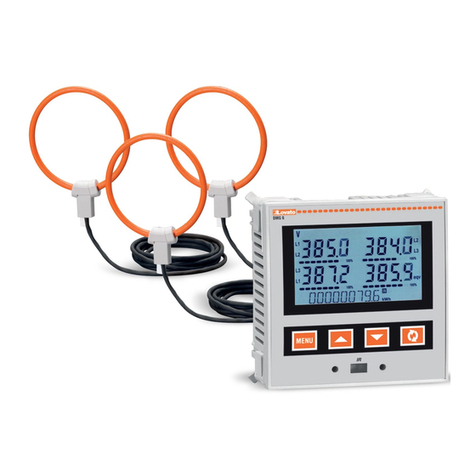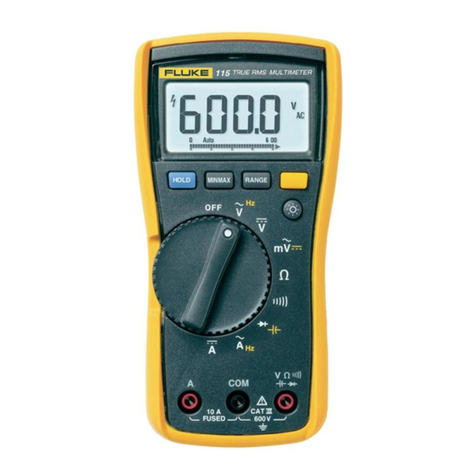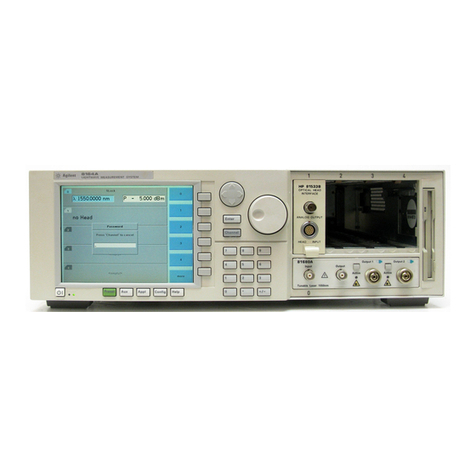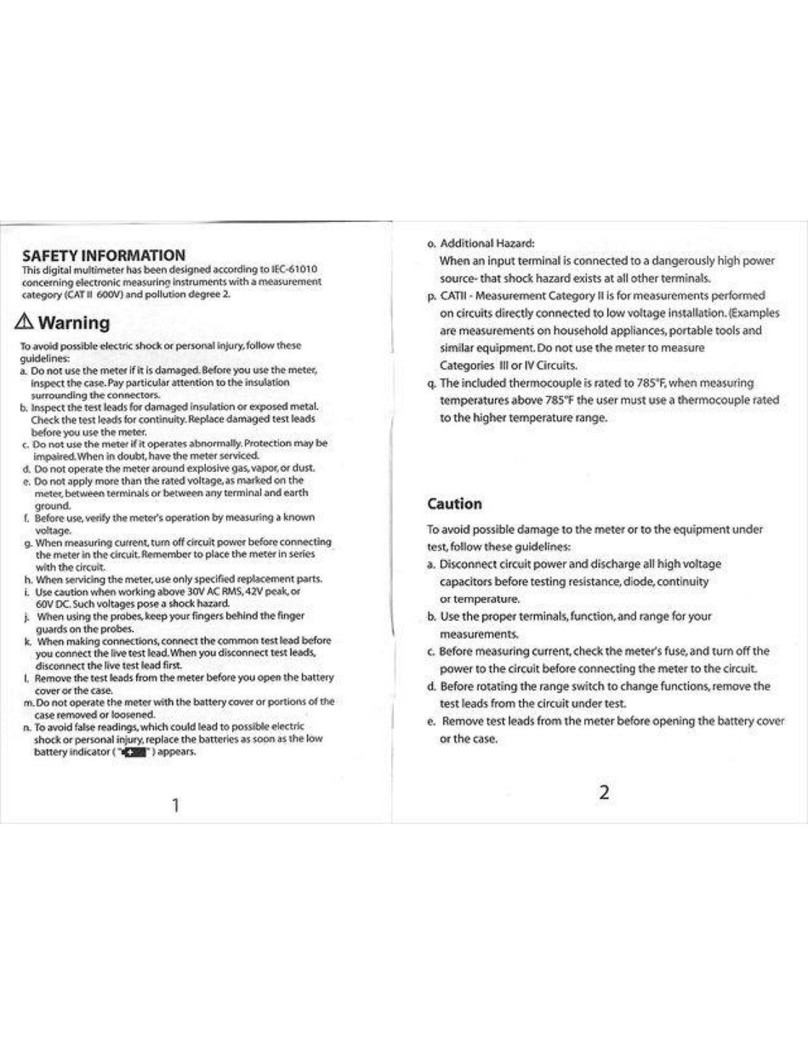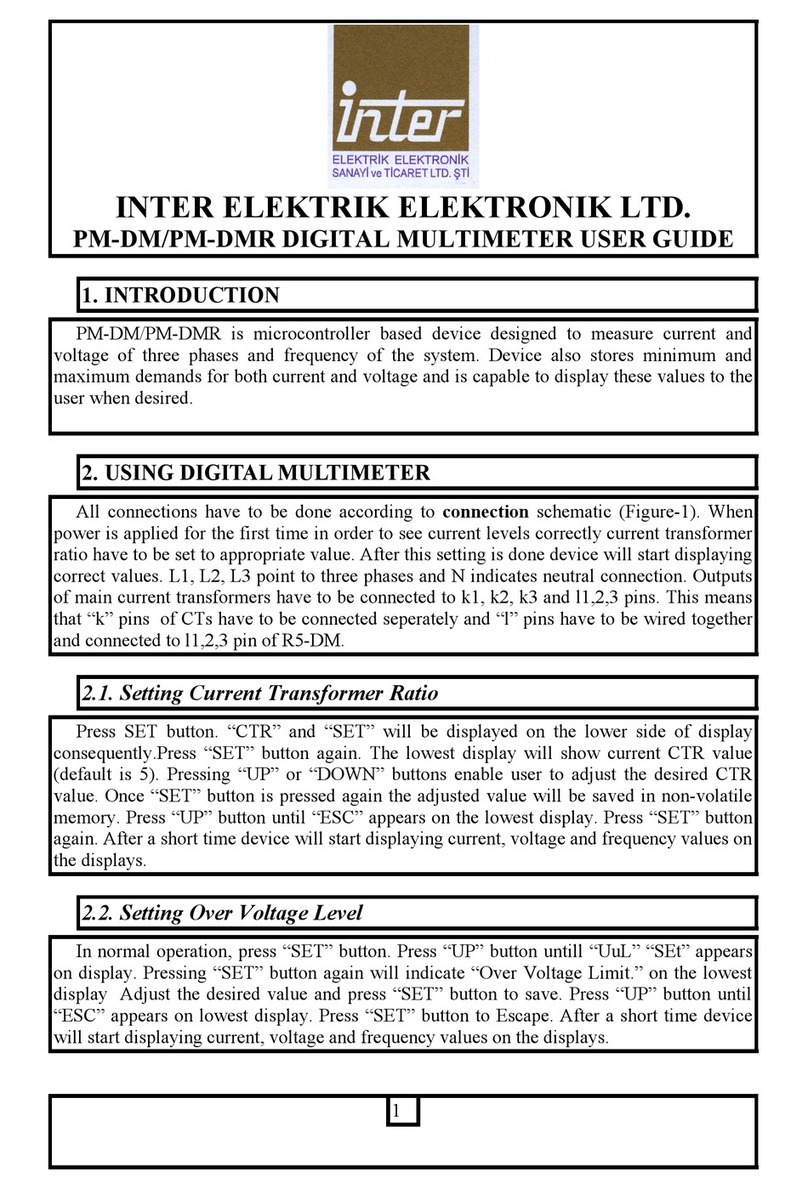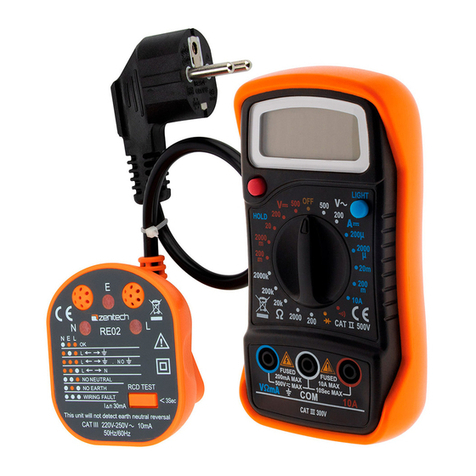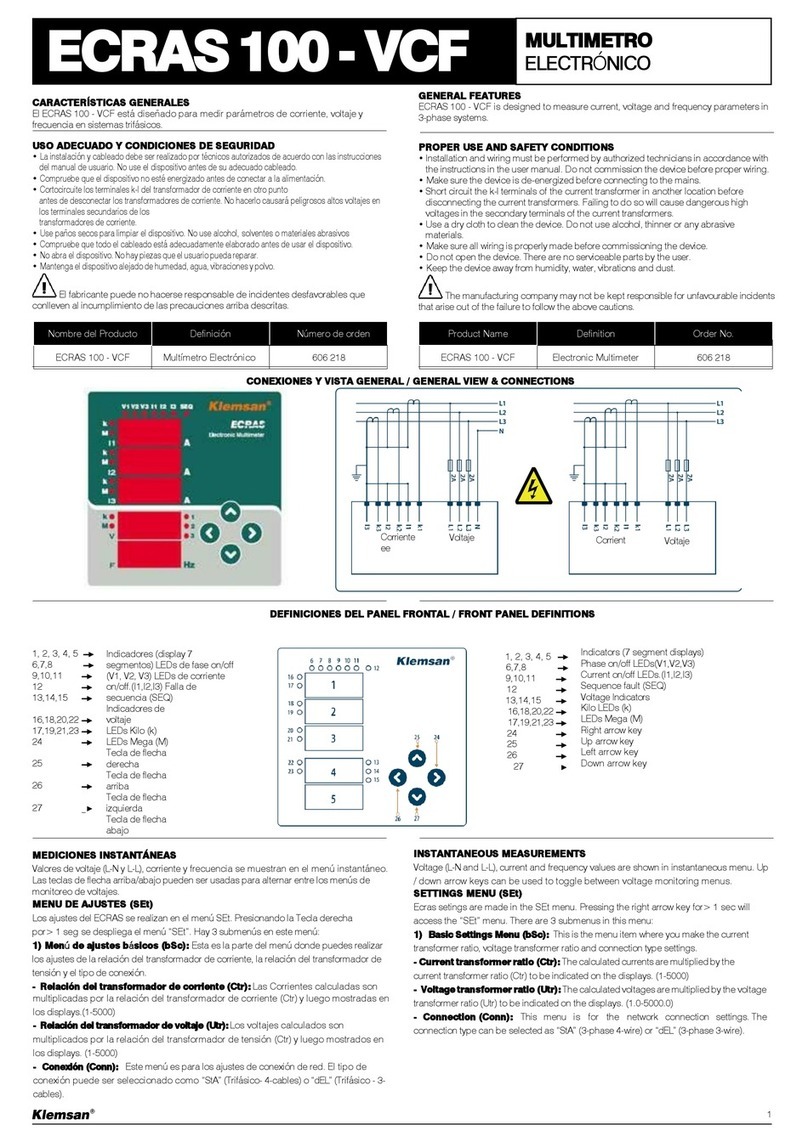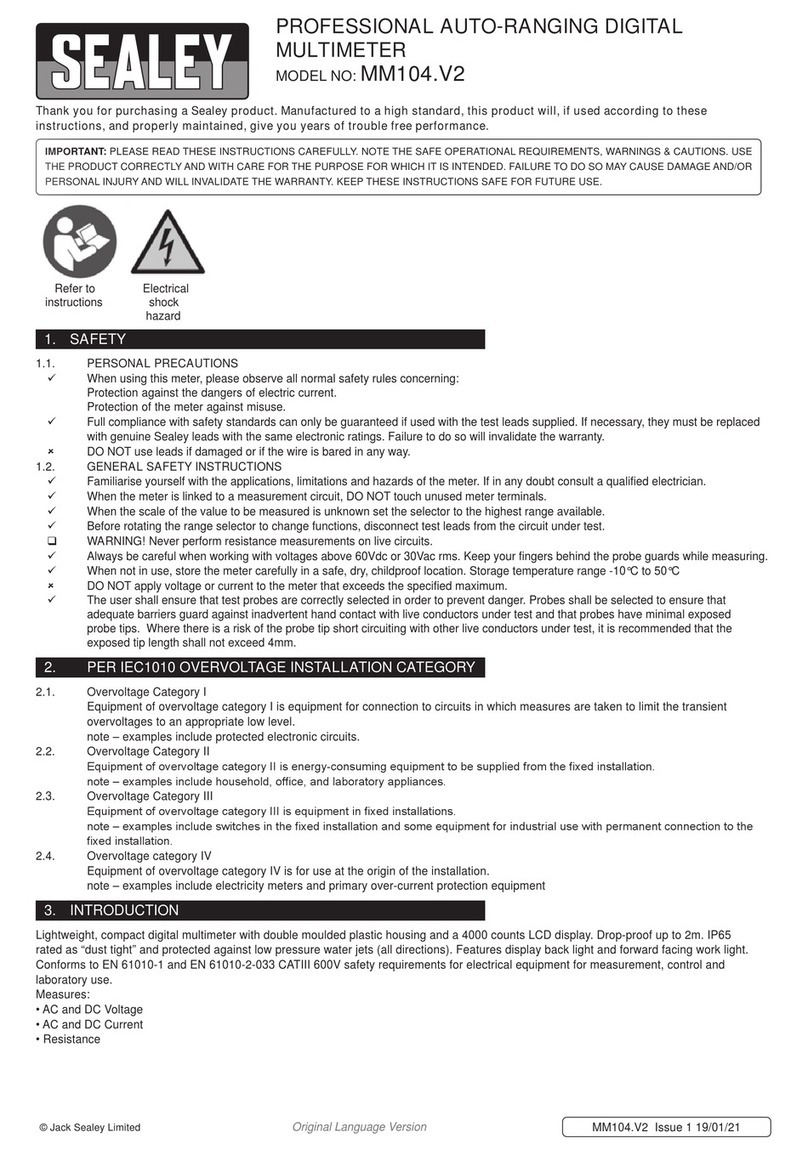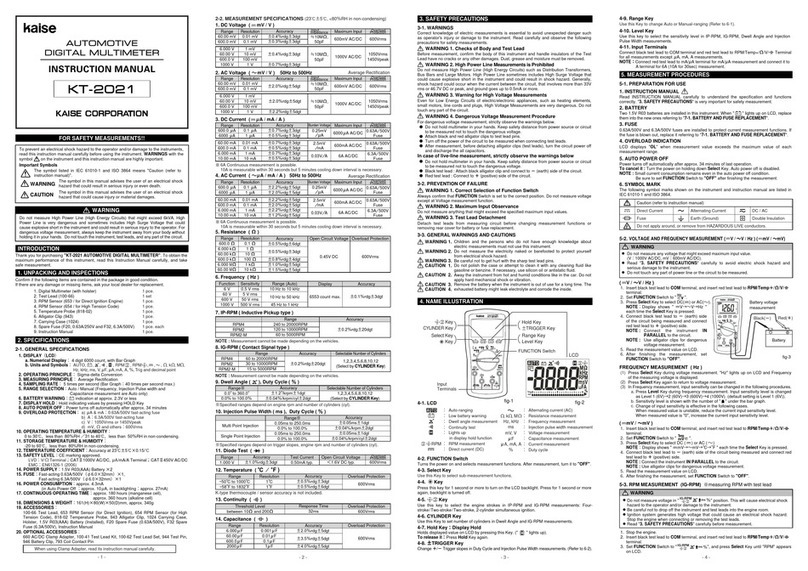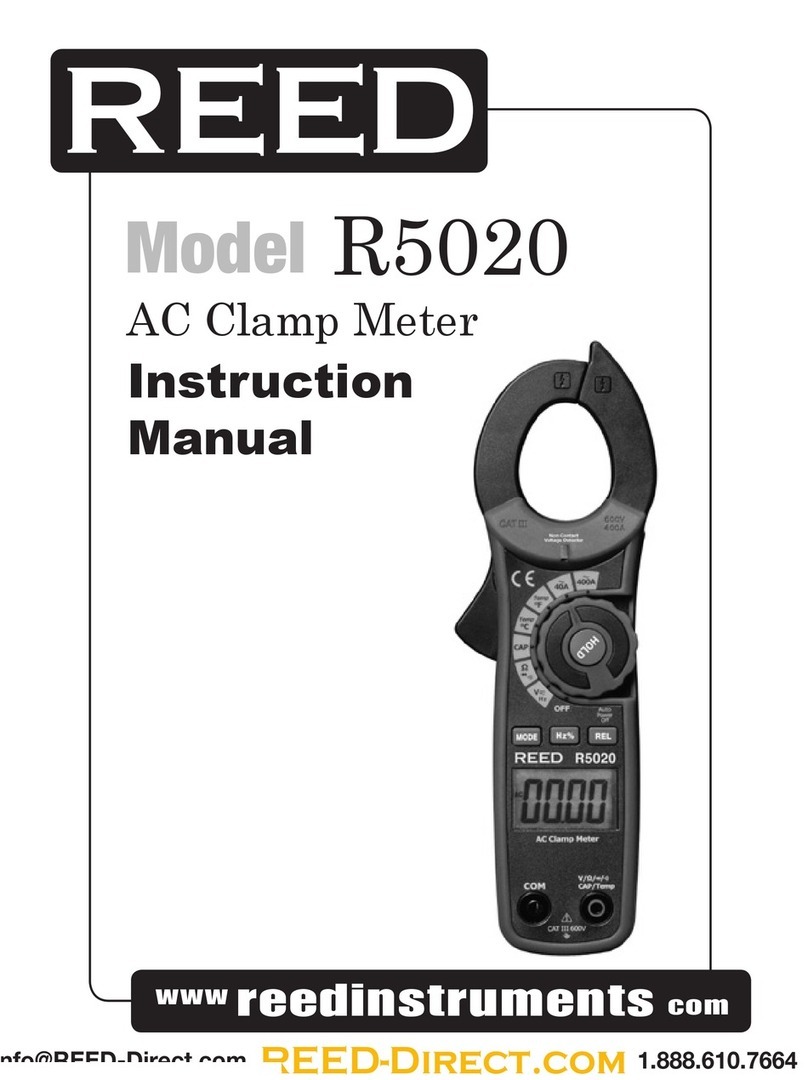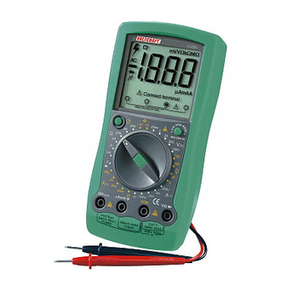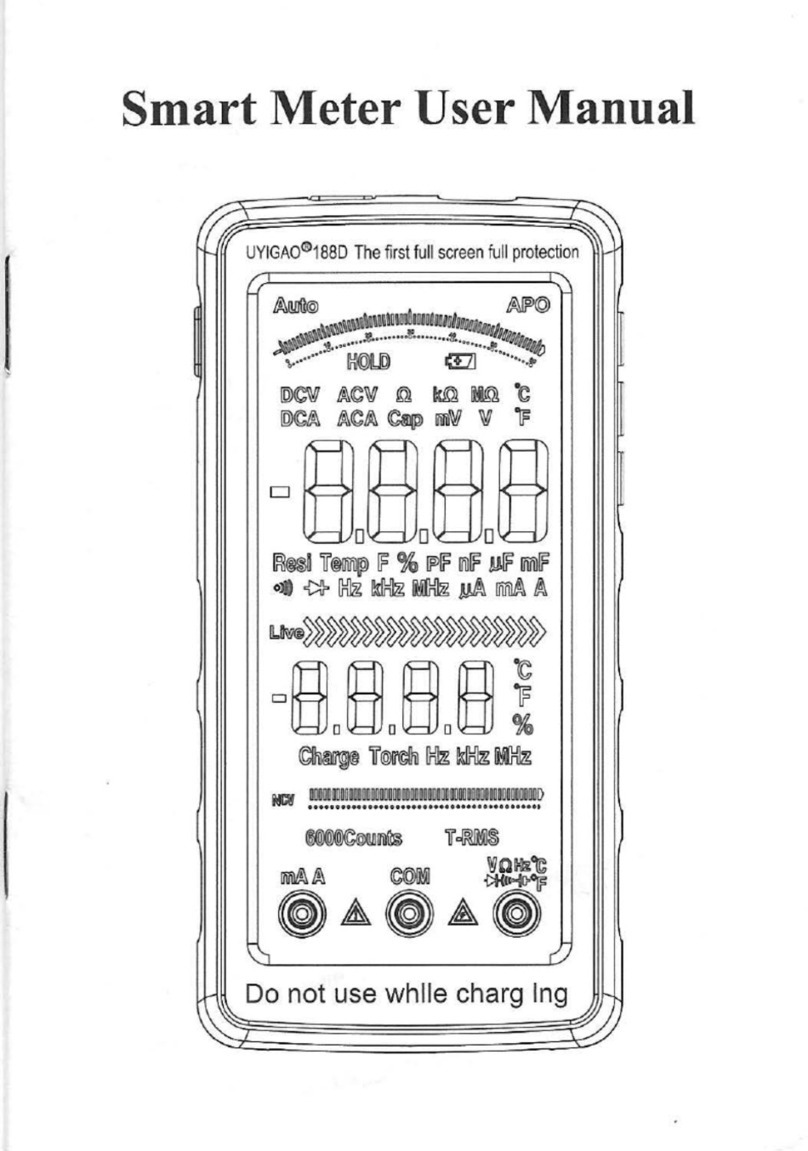
Doc: I272PLGB0710_DMG800 09/07/2010 str. 12 / 26
Progi limitów (LIM)
Progi limitów LIMn sąwewnętrznymi zmiennymi, których status zależy
od przekroczenia limitów pomiarów zdefiniowanych przez użytkownika
(przykład: całkowita moc czynna większa niż25kW).
By ułatwićustawianie progów, które mogąposiadaćdużą rozpiętość,
każdy z nich może byćustawiony na podstawie wartosci bazowej
i mnożnika (na przykład: 25 x 1k = 25000).
Dla każdego limitu LIM można przypisaćdwa progi, najwyższy
i najniższy, których znaczenie zależy od następujących funkcji:
Funkcja Min: Ta funkcja definiuje najniższy próg jako punkt zadziałania,
a najwyższy jako punkt kasowania. Zadziałanie dla progu LIM nastąpi kiedy
wybrany pomiar jest niższy, niżustawiony próg minimalny, dłużej
niżzaprogramowane opóźnienie. Kiedy mierzona wartość staje się
ponownie wyższa niżustawiony próg maksymalny, dłużej niżczas
opóźnienia, status LIM jest kasowany.
Funkcja Max: Ta funkcja definuje najwyższy próg jako punkt zadziałania,
a najniższy jako punkt kasowania. Zadziałanie dla progu LIM nastąpi, kiedy
wybrany pomiar jest większy, niżustawiony próg maksymalny, dłużej niż
zaprogramowane opóźnienie. Kiedy mierzona wartość staje sięponownie
niższa niżustawiony próg minimalny, dłużej niżczas opóźnienia, status
LIM jest kasowany.
Funkcja Min+Max: Przy tej funkcji oba progi definiująpunkty zadziałania.
Kiedy mierzone wartości sąmniejsze niżwartość minimalna i większe niż
wartości maksymalne, to po uwzględnieniu opóźnienia, nastąpi zadziałanie
LIM. Kiedy mierzone wartości powracająw granice limitów, to status LIM
będzie natychmiast skasowany.
Zadziałanie oznacza aktywacje lub de aktywacje zmiennej LIM,
w zależności od ustawień“Normalnego statusu”.
Jeśli włączona jest blokada LIM, kasowanie można wykonaćtylko
ręcznie, przy użyciu dedykowanej komendy, w menu komend.
Zobacz menu ustawieńM08.
Limit thresholds (LIM)
The LIMn thresholds are internal variables whose status depends on
the out-of-limits of one particular measurement set by the user (e.g.
total active power higher than 25kW) among all those measured.
To make the setting of the thresholds easier, since the limits can span
in a very wide range, each of them can be set using a base number and
a multiplier (for example: 25 x 1k = 25000).
For each LIM, there are two thresholds (upper and lower), whose
meaning depends on the following functions:
Min function: The lower threshold defines the trip point, while the upper
threshold is for the resetting. The LIM trips when the selected
measurement is less than the Lower threshold for the programmed delay.
When the measured value becomes higher than the upper setpoint, after
the delay, the LIM status is reset.
Max function: The upper threshold defines the trip point, while the lower
threshold is for the resetting. The LIM trips when the selected
measurement is more than upper threshold for the programmed delay.
When the measured value decreases below the lower setpoint, after the
delay, the LIM status is reset.
Max+Min function: Both thresholds are for tripping. When the measured
value is less than lower or more than upper setpoints, then, after the
respective delays, the LIM will trip. When the measured value returns
within the limits, the LIM status will be immediately reset.
Trip denotes either activation or de-activation of the LIM variable,
depending on ‘Normal status’ setting.
If the LIM latch is enabled, the reset can be done only manually using
the dedicated command in the commands menu.
See setup menu M08.
Logika Boole’a (BOO)
Możliwe jest utworzenie, maksymalnie 8, zmiennych nazywanych
BOO1…8 , których status zależy od kombinacji, wg logiki Boole’a,
progów limitów, wejść, wyjść itd.
Operandy (INP, LIM itp.) mogąbyćłączone z operandami logiki Boole’a:
AND, OR, EXOR, AND NOT, OR NOT, EXOR NOT.
Każda zmienna Boole’a jest rezultatem maksymalnie 4 operandów
połączonych z 3 logicznymi operacjami.
Przykład: jeśli chcemy by zmienna Boole’a BOO1 była aktywowana,
kiedy limity LIM1, LIM2 i LIM3 sąwszystkie aktywne lub kiedy wejście
INP1 jest aktywne, to BOO1 musi byćustawione na kombinacje LIM2
AND LIM3 AND LIM4 OR INP1.
Nie jest koniecznym używanie wszystkich 4 operandów dla jednej
zmiennej Boole’a. Jeśli na przykład, chcemy tylko by BOO2 była
aktywna, kiedy aktywne sąINP1 lub INP2, możliwe jest
zaprogramowanie parametrów BOO2 kombinacjąINP1 OR INP2,
pozostawiając działanie logiczne ustawione na --- (brak działania).
Strona LOGIKA BOOLE’A wyświetla, dla każdej zmiennej BOO1..8,
status pojedynczego operandu, który zamieszany jest w logiczne
działanie i ostateczny rezultat, to jest status wybranej zmiennej Boole’a.
Boolean
logic (BOO)
It is possible to create max. 8 internal variables named BOO1..8, whose
status depends on the Boolean logic combination of limit thresholds,
inputs, outputs, etc.
The operands (INP, LIM etc) can be combined between each other with
the following Boolean operators: AND, OR, EXOR, AND NOT, OR NOT,
EXOR NOT.
Every Boolean variable is the result of max 4 operands combined with 3
logic operations.
Example: if one wants the Boolean variable BOO1 to be activated when
the limits LIM1, LIM2 and LIM3 are all active or when the input INP1 is
active, BOO1 must programmed as the combination of LIM2 AND LIM3
AND LIM4 OR INP1.
It is not necessary to use all 4 operands for one Boolean variable. If for
instance, one wants BOO2 to be active when INP1 or INP2 are active,
then it is possible to program BOO2 settings with the combination INP1
OR INP2, leaving the following logic operations set to --- (no operation).
The BOOLEAN LOGIC page displays, for every variable BOO1..8, the
status of the single operands that are involved in the logic operation and
the final result, that is the status of the selected Boolean variable.
Operand 1
Działanie logiczne
Operand 2
…
Status operand. 1
Status zmiennej
rezultatu
Operand 1
Logic operation 1
Operand 2
…
Operand status 1
Status of the
resulting variable
Typ pomiaru
Funkcja
Wartość pomiaru
Najwyższy próg
Opóźnienie dla
progu
Najniższy próg
Status limitu
zmiennej
Type of measure
Function
Value of measure
Upper threshold
Threshold delay
Lower threshold
Status of the limit
variable
























